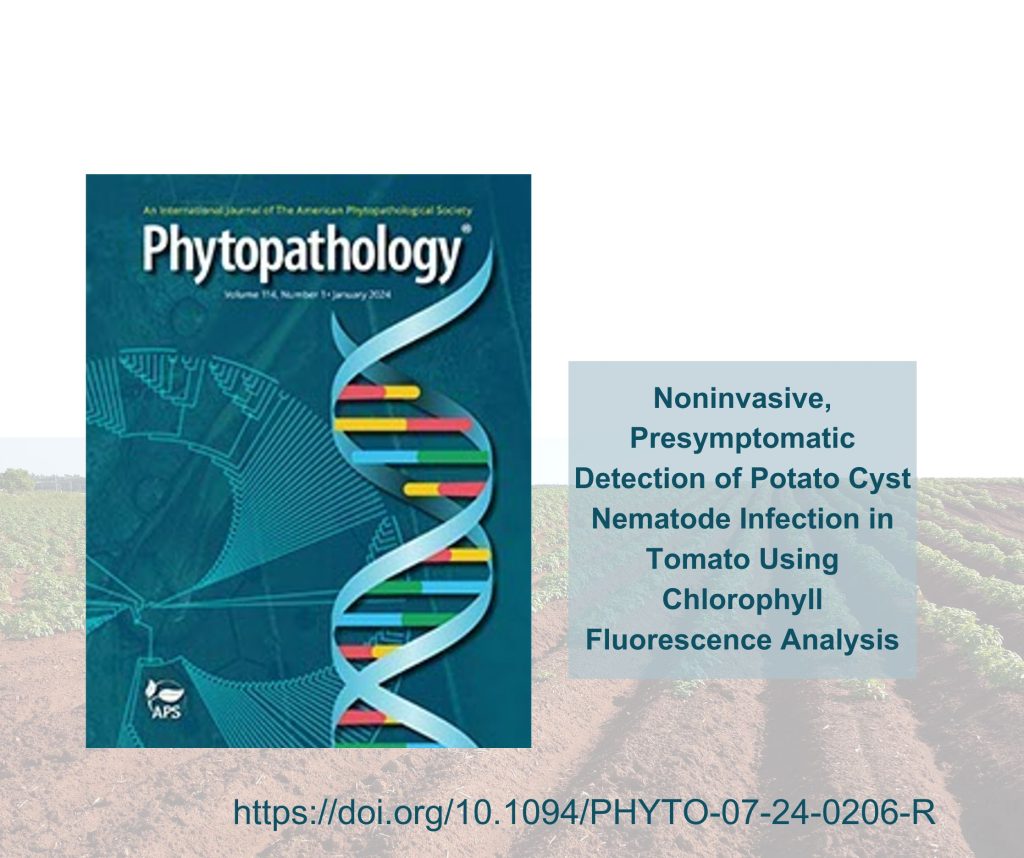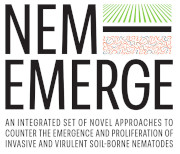
NEM-EMERGE finds a non-invasive method to detect potato-cyst nematodes in plants
With the aim of developing non-invasive methods for nematode infestation in potato fields, a number of researcher partners of NEM-EMERGE investigated whether chlorophyll fluorescence (Chl-F) could be suitable as a rapid, nondestructive method for early potato-cyst nematode detection. Partners from Wageningen University, Novonesis and Wageningen University & Research joined forces to carry out this piece of research, which led to exciting results. The journal Phytopathology has published an article about these results.
Potato-cyst nematodes (PCN) are among the most harmful plant parasites and constitute a major threat to potato production. Infections often result in locally reduced growth or incomplete closure of the crop foliage in a later phase of the disease. As a consequence, mild PCN infections are not readily observable by growers, which often results in a late detection of the infection, hampering rapid control and containment measures.
PCN field infestations are often patchy in nature and generally occur in so-called foci, which are infection hot spots in a field, with a gradual lower density with distance. Early detection of these foci could drastically reduce the spatial scale at which control measures need to be applied. Currently, the in-field localization of PCN foci requires a major soil sampling, cyst extraction, and cyst quantification effort. Therefore, the availability of an affordable, nondestructive, and rapid method to detect early PCN infections would be very helpful for a more efficient application of local control measures.
In their investigation, researchers follow an approach already adopted by other scientists to detect in a non-invasive way in other plants, which is based on the principle that a part of the light energy absorbed by the photosynthetic system in the plant is re-emitted as fluorescence, so-called Chlorophyll fluorescence, and this can be used to infer the efficiency of photosynthesis of plants. However, the impact of PCN on the chlorophyll fluorescence of the host plants was largely unknown, and this is what the NEM-EMERGE scientists wanted to analyse.
They studied changes in various fluorescence parameters in tomato plants upon PCN infection, as tomato is also a very good host for PCN. “We found the fluorescence characteristics of tomato leaves change upon nematode infection”, stated Hans Helder, the NEM-EMERGE project coordinator and one of the researchers participating in this study. Moreover, results showed that—before decreasing at higher infection levels—some photosynthesis performance parameters increase upon exposure to low PCN densities.
Overall, this study provides a proof of principle for a rapid, affordable, and sensitive tool for a presymptomatic detection of PCN. For further development of Chl-F as an affordable, sensitive, and rapid tool for the early detection of PCN infection at the field level, some other questions need to be addressed. For example, whether potato responds similarly to PCN infections as tomato, although both plant belong to the same plant genus. It also remains to be investigated whether these signals can be distinguished from those produced by other belowground stressors in the field.
Share on Facebook Share on Twitter Share on Pinterest